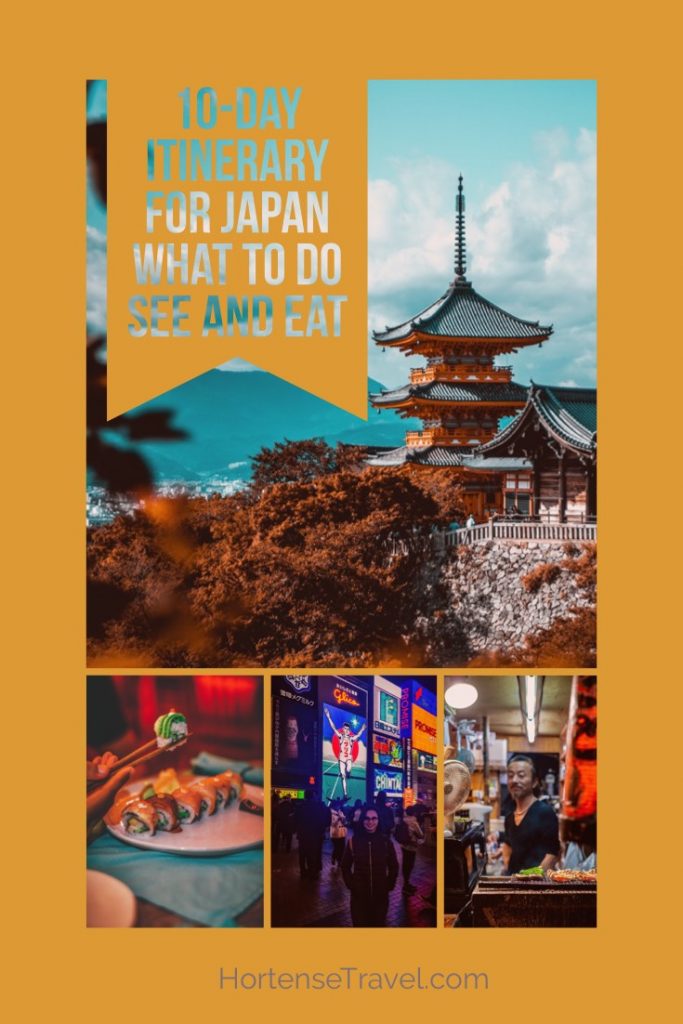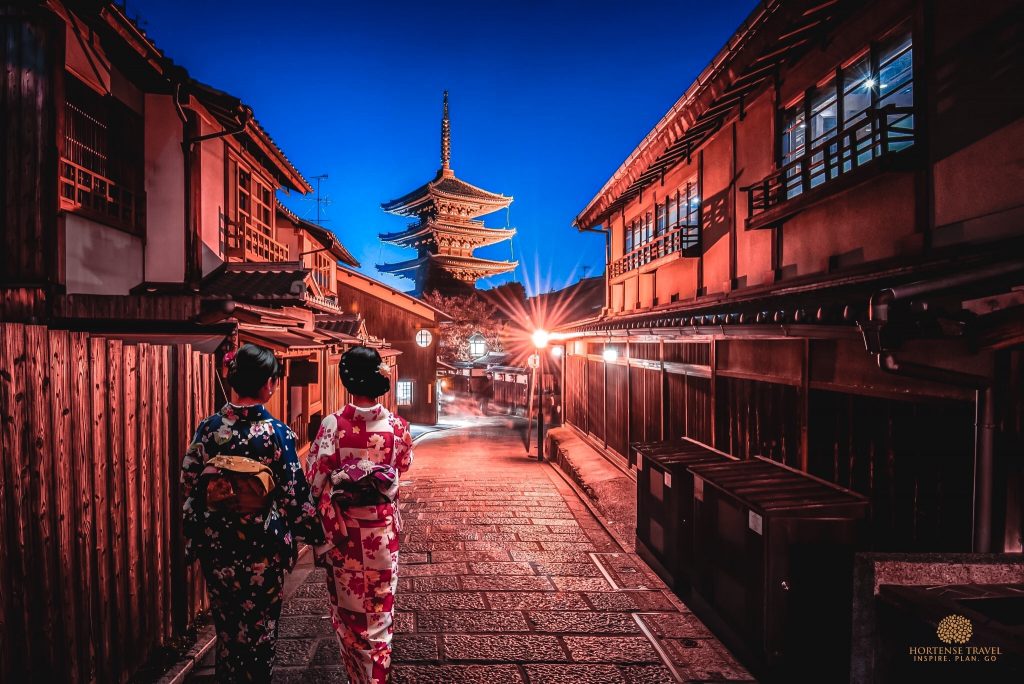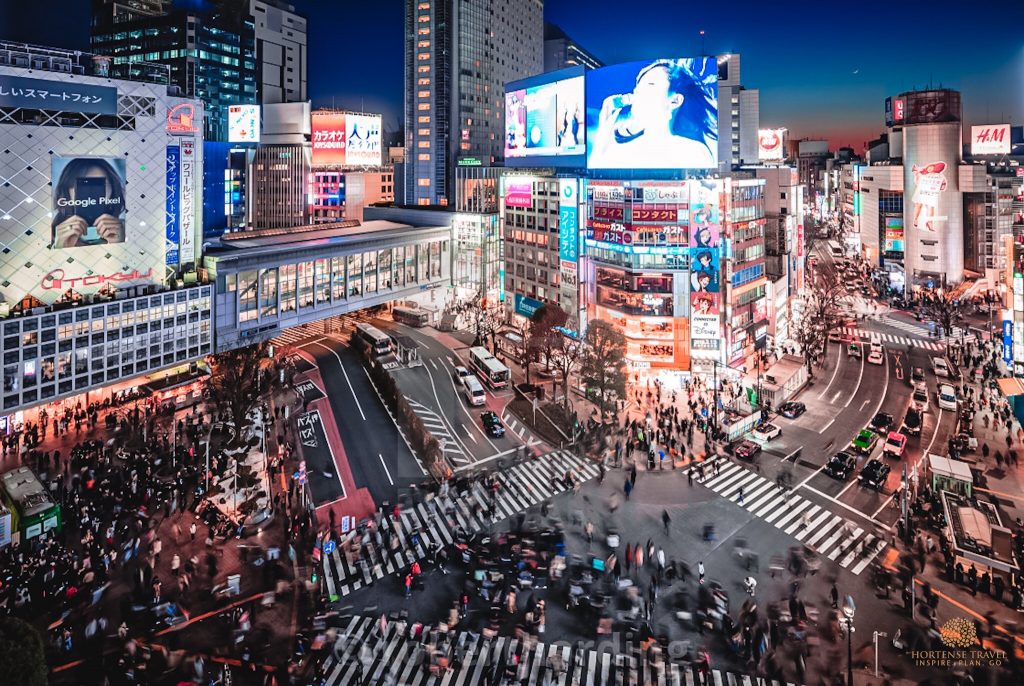
No doubt you have your own image of Japan, whether it’s a mecca of anime and video games, a fashion hub, cultural hoard or fast-paced, glittering cities. Also known as the “Land of the Rising Sun”, Japan is perhaps the most traveled of East Asian countries, due to its diverse geographical terrain and seasonal attractions. Capital Tokyo and laid-back Osaka are favorites of city-dwellers, whilst Kyoto lures with heritage and Hokkaido with snow-laden mountains. There’s something for everyone in this 10-day itinerary for Japan.

Japan is also known for its long-reigning monarchy, history rife with imperial wars and rapid development. As a result, visitors are gifted with remnants of royal residences and traditional complexes, alongside temples and shrines dedicated to local deities. Festivals, hot springs, ceremonial rites, and other unique cultural practices only add to the appeal, backed with the modern-day entertainments of karaoke, anime and technological goodies. The Japanese language also grew popular in the 2000s, thanks to the international spread of Japanese pop culture.
Transportation in Japan
Japan is divided into five main islands: Honshu (the main island), Kyushu, Shikoku, Hokkaido, and Okinawa. One of the world’s most densely populated countries, most of the population has gathered around urban areas, with Tokyo housing over 38 million. And what connects its total population of 126.2 million people is one of the most developed and efficient transportation systems in the world. Well-developed roads and transportation systems both cross-country and within cities have ensured quick travel.
If you’re traveling cross-country, the recommended mode of transport is via railway. The Japan Railways Group (JR) is comprised of six regional operators, offering passenger services that range from normal rapid trains to express trains. Other major railways include Odakyu, Hankyu, Kintetsu and Hanshin.
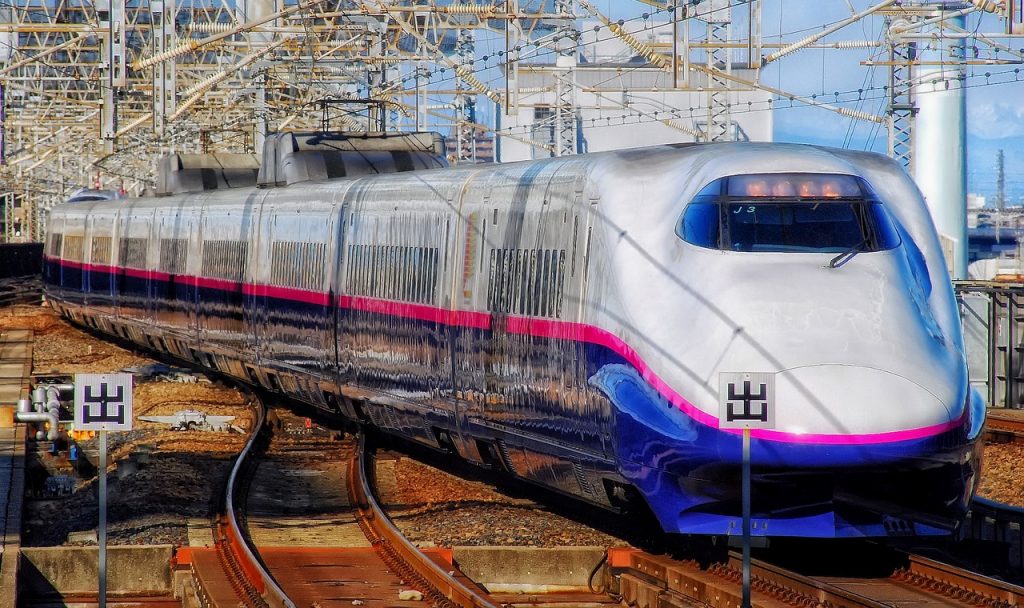
For travelers staying for a week or longer, train passes might be worthy investments if you plan on exploring the regions in depth. Of the passes available, the Japan Rail Pass is most affordable: it offers unlimited travel on JR trains nationwide (except Nozomi and Mizuho lines), as well as access to select JR buses and ferry to Miyajima.
7 days – 29,110 yen/14 days – 46,390 yen/21 days – 59,350 yen
There are other regional passes such as the Kyushu Rail Pass which covers all JR Kyushu trains except the Sanyo Shinkansen, or the Hakone Free Pass that will take you on a round trip to Hakone and covers the use of trains, cable car, ropeways and boats within the area.
In-city travel is generally covered by JR railways, local railways, and metro lines. You can maximize efficiency by purchasing an IC card, which are prepaid travel cards applicable almost everywhere. Depending on the city, you can purchase any of the Pasmo, Suica or Icoca cards from train stations and recharge at the ticketing machines. While you rarely get discounts from using these cards, they’ll save you time from purchasing tickets per ride.
[cmcrpr_exclude] Japan [/cmcrpr_exclude]Food in Japan
Japanese food has burrowed into everyone’s hearts for good reason. With access to both sea and fertile land, ingredient diversity has resulted in regional goodies that range from staples to extravagant set meals. You’re guaranteed to find something that suits your taste.
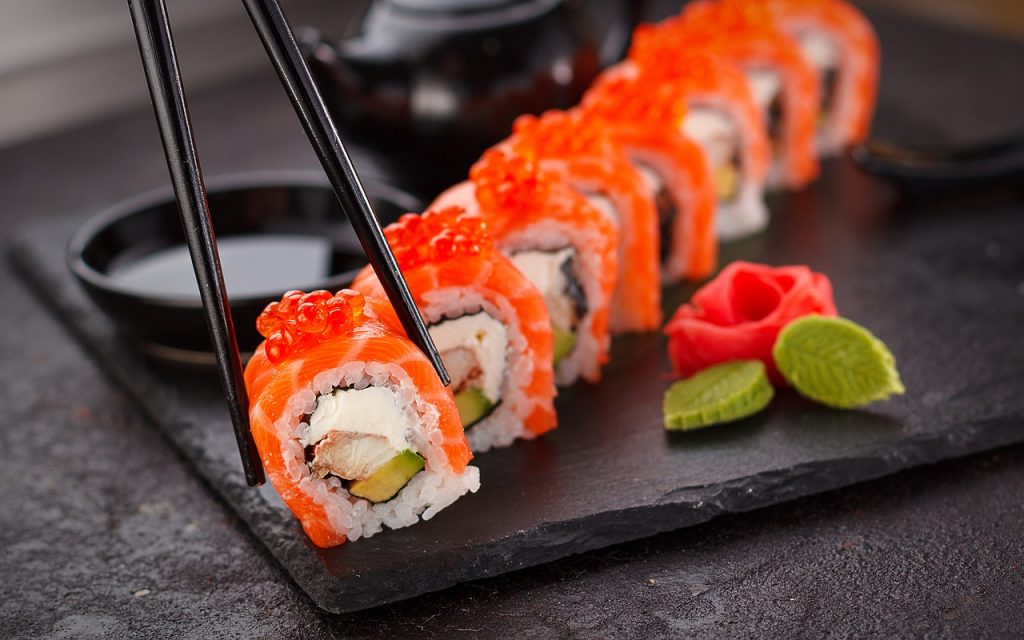
Sushi and sashimi are, of course, well-recognized foods. Hokkaido is best for seafood, although Tokyo’s Tsukiji Fish Market never disappoints. You might cringe at the thought of eating raw fish, but there are cooked toppings too, including tofu wrapped bites and cooked egg.
Japan is known for its stews and hot pot as well; think sukiyaki, nabe, shabu-shabu, and more variations. Give the all-you-can-eat restaurants a try. Sets range between ¥1,500+ and ¥3,000 depending on how extensive the menu is. This applies to Japanese yakiniku as well, where you can enjoy different tiers of grilled meat.
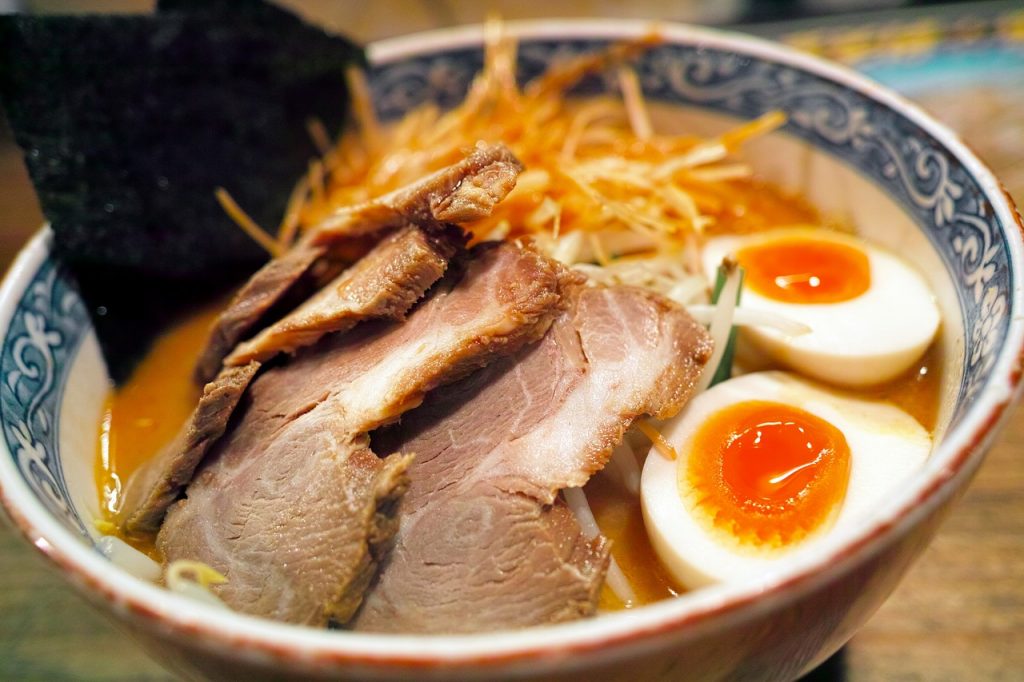
Of the noodles Japan has to offer, ramen wins out over udon and soba. Did you know that ramen came with various noodle textures and broths? Tonkotsu (pork bone) broth is the recent trend, but other regional specialties include a salt base, miso, butter, and Fukuoka’s black garlic soup. World-famous Ichiran is a ramen chain that rightly represents the gloriousness of ramen, but nothing beats Kyoto JR Station’s Ramen Street in terms of regional test tasting.
Other Japanese specialties include deep-fried pork cutlet, okonomiyaki (savory pancake), takoyaki (octopus balls), eel rice, omurice (egg-wrapped rice) and tempura (deep-fried batter-dipped foods). Try to aim for different food items every meal! Japan also has plenty of western-styled cafés for afternoon tea or post-dinner treats. You’ll find filling and aesthetically pleasing parfaits, cakes and themed sweets.
Is Japan expensive in comparison to Korea and Hong Kong?
Japan is moderately more expensive to travel compared to Korea and Hong Kong depending on which spending category you’re looking at.
When it comes to accommodation, Japan has a fair range of guest houses, hostels, hotels, and traditional inns. Budget to luxury price ranges are to be expected; they are also affected by the season of travel and location. A 4-star hotel in Tokyo, for instance, may cost twice as much per night compared to one based in a smaller city. Of the three cities, Hong Kong tends to have the most expensive accommodation due to limited space and absorbent land cost.
Transportation wise, Japan is more expensive than both Korea and Hong Kong. The base fare for a single train ticket averages at ¥150; a single stop could cost ¥220 and more. Meanwhile, Korea’s base fare for the metro approximates ¥100 and Hong Kong for less than half of that. There’s no comparing food as you can always find eateries that fit your budget.
Shopping in Japan
Generally speaking, Japan is more expensive due to tax. This is evident when you’re shopping or dining out. Consumption tax is a flat 10% on all items except food and drinks, so factor it into your budget.
Japan is known as a haven for fashionistas, brimming with colossal shopping malls and boutique stores. International brands are prominent in department stores, while street shopping favors indie brands and fast-fashion. Tokyo reigns as top shopping hub, youth trends coming out of Shinjuku, Shibuya and luxury brands dominating Ginza. The country is also known for its electronics, which can be found in technology-centric chain malls like Yodobashi Camera. Whilst household items are top line, the difference in voltage means visitors rarely buy bulky items home; cameras, phones and other accessories are another story.

Souvenirs come in all shapes and sizes thanks to Japan’s creative and often excessive packaging. Easy bring-backs are snack items, which you can score in convenience stores or the basement food level of department stores. Royce chocolates are a popular choice; Tokyo Banana is another. Other popular souvenirs include random trinkets from street stalls, the generic keychains, fans, Japan-themed goods and chopsticks. You can also buy back protective charms from shrines as a meaningful gift.
A 10-Day Trip: Daily Itinerary
Tokyo is always a good landing point as its international connections mean more flight choices and easy accessibility. The high volume of flights also means cheaper fares (granted you book early enough) and starting with the most expensive city will loosen the budgeting concerns later down the line.
Day 1: Touch down in Tokyo
Arrival in Tokyo! Activate your JR Rail Pass if you purchase one before taking the Narita Express to the city center. Alternatively, you can take the normal rail line or an airport express bus to your destination.
Where to stay in Tokyo
With handy transportation, nowhere is too inconvenient in Tokyo but there are certain neighborhoods that make sightseeing more practical. If you’d like to be smack dab in Tokyo’s metropolitan hustle, Shinjuku and Shibuya are convenient hot spots. Ginza is suited for those with luxury expectations while Sumida provides a quieter but no less cultural alternative.
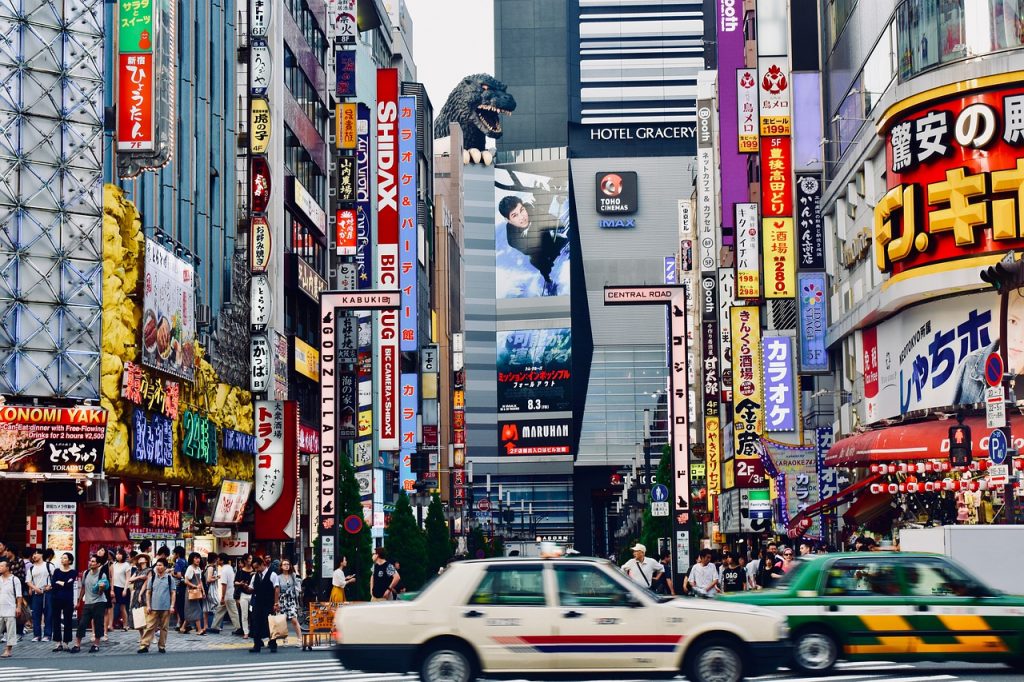
Shinjuku
Those prioritizing accessibility and convenience should stay around Shinjuku area. Not only is Shinjuku Station one of the most connected railway stops, but the neighborhood is home to numerous malls. It is also the heart of nighttime entertainment if you plan on capping the night at a club or bar.

Shibuya
Shibuya is where the young people hang out, a spread of boutique shops, cafés, and entertainment venues. It’s a great option for mid-range budgets thanks to accommodation variety and surrounds shopping area.
Ginza
Ginza is a rich man’s land, home to luxury department stores and fine dining. If you’re willing to splash out on a comfortable stay and plan on hitting up high-end brands, the neighborhood is in perfect vicinity of Roppongi and Omotesando, which house both fashion streets and art-based attractions.
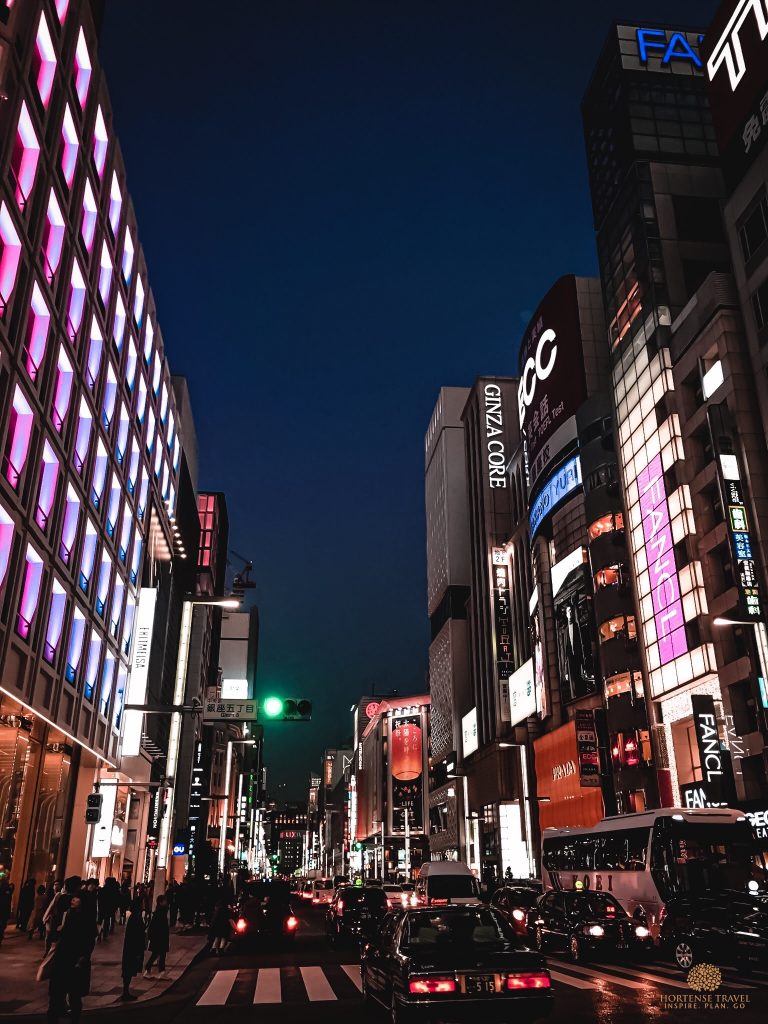
Sumida
Sumida ward sits away from the main bustle of Tokyo but with its fair share of attractions. Sensoji Temple, Sky Tree Tower, and the Edo Museum all sit within its boundaries; quaint Yanezen and game central Akihabara are just short train rides away.
Depending on arrival time, you can either check-in and retire for a well-deserved break, or explore the area around your accommodation. It’s also a good idea to gather some brochures from either the airport information counter or hotel reception for any seasonal attractions or events.
Day 2 – 4: Exploring Tokyo
Build your own itinerary based on your interests; here’s a list of top neighborhoods to visit. You can piece together your own ratio of shopping and sightseeing by diving your day into three parts: morning plans, lunch and afternoon activities, dinner and post-dinner entertainments.
Gardens, shrines, and other outdoorsy spaces are best to visit in the mornings as they tend to be open earlier than the shops. It also guarantees fewer crowds and a calm environment to balance out the afternoon rush. Noontime activities are best accommodated in busy areas as you get more lunch options; you then have five to six hours to exploration time. You can enjoy dinner at a slower pace and hit up sceneries that are best seen in the evening, such as panoramic views from sky-high observation decks. You can also dive into an intense session of karaoke or vibe at a live music bar.
Shinjuku & Shibuya
Bust out your shopping chomps at Shinjuku and Shibuya, both teeming with shopping malls. Where Shinjuku offers department stores such as Lumine EST, MyLord, Keio Mall, Isetan, Takashimaya, NEWoMan and so forth chains, Shibuya trades off with trendier Shibuya 109 and PARCO. Both run the nightlife in Tokyo, extending playtime to early morning with a roster of bars, clubs, Karaoke, and amusement hubs. Shinjuku’s expansive Shinjuku Gyoen park is another to-see attraction, while Shibuya Crossing is one of the world’s most photographed spots.
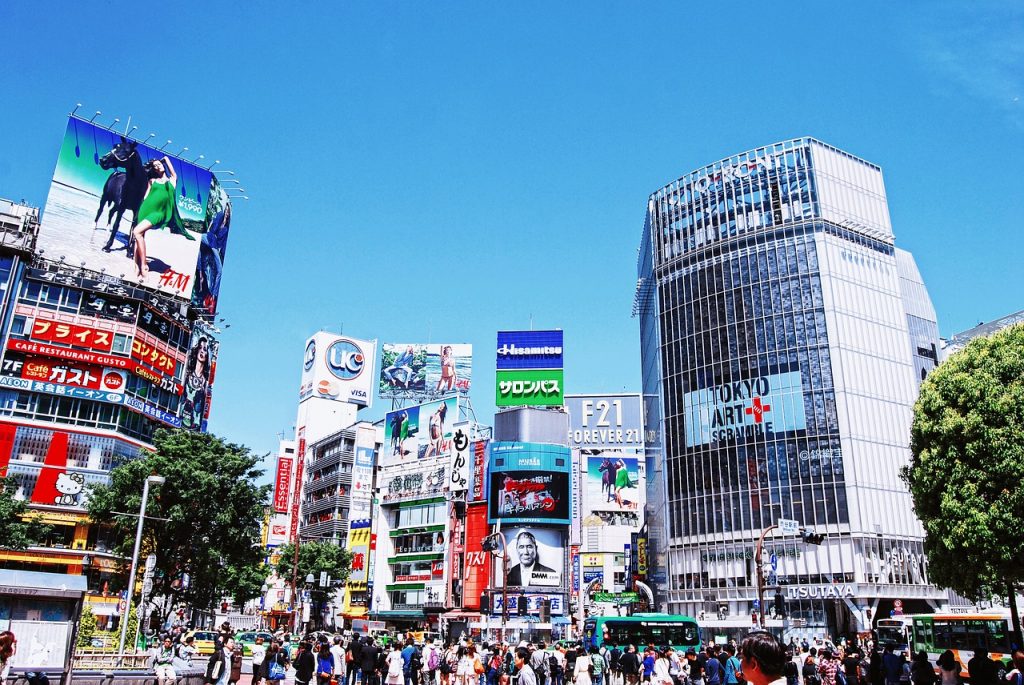
You can easily spend an entire day exploring both neighborhoods, which are a short JR ride from each other.
Tsukiji Fish Market
The wholesale part of Tsukiji Fish Market might have been relocated but the original grounds still host numerous street food stalls and family-run restaurants. Come around noon and fill up on the butter-baked oysters, cheese-layered seafood, freshly grilled fish and eel. The sashimi bowls are worth shelling out ¥2,000 plus; if raw fish isn’t your thing, then dig into the chargrilled eel sets or seafood tempura served with udon. Eating well is part of the Japan experience!
Asakusa
For bigger cultural attractions, Asakusa is a hotbed of history. Once the merchant town of Edo Tokyo, it has retained olden-styled shopping streets and one of the remaining indigo dye houses. It also houses Sensoji Temple, known for its vermillion pagoda and charming Nakamise Shopping Street; you’ll see people dressed in kimonos matching its old-town glory. Asakusa is great for souvenir shopping, especially traditional Japanese snacks such as kaminari-okoshi, a.k.a thunder crackers.
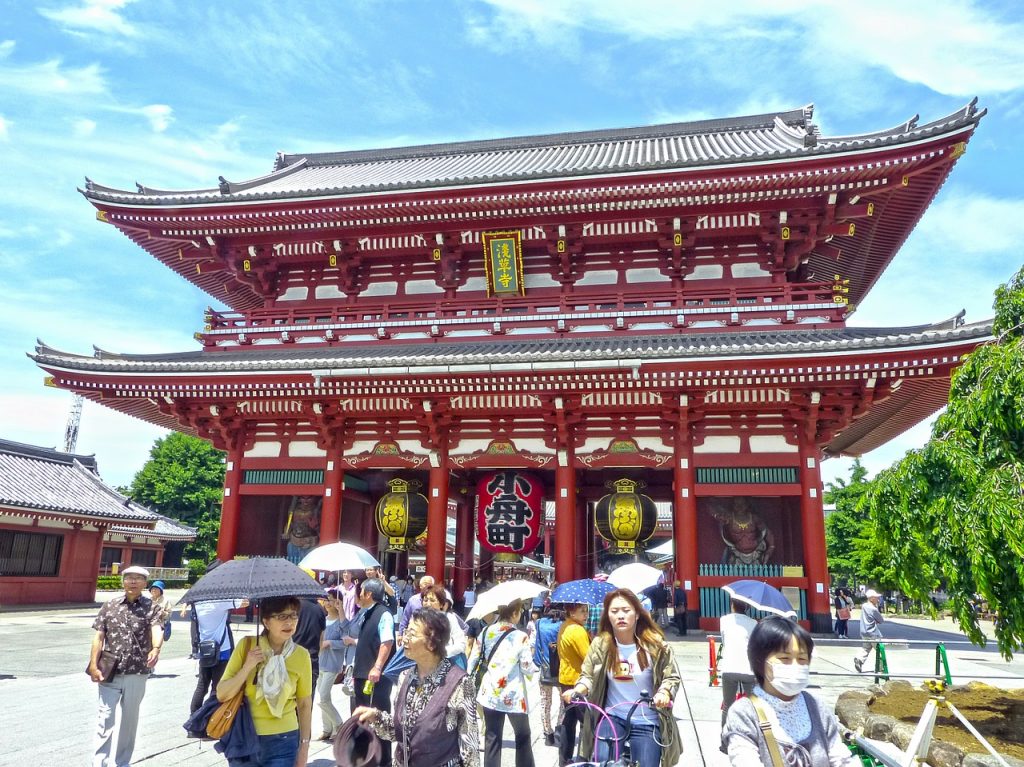
Just beyond Sensoji Temple is Sumida River, where you can embark on a river cruise down to Tokyo Bay. Further down the opposite bank is Skytree Tower, whose observation decks offer scenic sweeps over Tokyo from dawn to late evening.
Ebisu, Daikanyama, Naka-Meguro & Meguro
The neighboring Ebisu, Daikanyama, Naka-Meguro, and Meguro are worth an afternoon wander, taking you through quieter and more indie-leaning streets. Start with lunch around Ebisu Station, either within the Atre mall or along its main food street, Ebisu Yokocho. The entrance is easily identifiable by decorative lanterns; the actual choices range between izakaya-skewers, okonomiyaki, specialty noodle shops, set meals and more.
Navigate the interesting sights between Ebisu and Daikayama – mostly unique and artsy shop fronts. Daikanyama’s trendy and hipster neighborhood isn’t far; track down the Daikanyama T-Site combo of bookstore and café or browse the fashion boutiques and architectural highlights between Log Road Daikanyama and Address.
Continue the hip route with Naka-Meguro and Meguro, where cafés, small eateries, and indie shops are poised alongside Meguro Canal. You can avoid the usual commercial fare in this cozy neighborhood. It is especially beautiful in April, when cherry blossoms cover the pedestrian paths alongside the canal.
Tokyo Imperial Palace & Tokyo Tower
In the very heart of Tokyo city sits Tokyo Imperial Palace and Tokyo Tower. If you’re one for classic itineraries, Tokyo Tower is one of the must-stops. While it is no longer the only observatory point in the city, it is an iconic red beacon that deserves attention. Tokyo Imperial Palace is another historical nod and one that is currently in use. Explore the remnant foundations of old castle grounds and explore the expansive East Gardens, complete with a deep moat and layered landscapes.
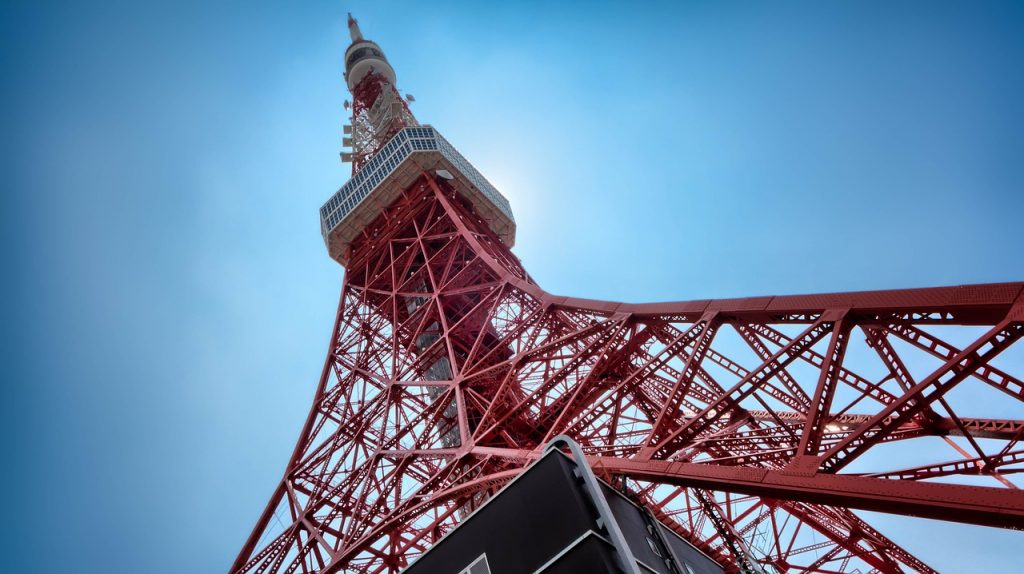
Kichijoji
Kichijoji is the neighborhood everyone wants to move into; it’s the perfect balance between urban and peaceful. Surrounding the station are the covered Kichijoji Sun Road Shopping District, Atre and Coppice department stores for your consumer needs. Further out is Inokashira Park, known for its cherry blossom viewing spots and swan boating on the lake. The recent addition of Ghibli Museum has lured many tourists to the area.
Yoyogi Park & Meiji Shrine + Harajuku & Omotesando
There’s plenty to see around Harajuku JR Station, both shopping-wise and culturally. You should do a quick run-through Yoyogi Park first, whose wide gravel paths lead up to the sacred Meiji Shrine. The host of annual New Year celebrations and one of the most spiritual places in Japan, the shrine is a lesson in religious practice. Draw your fortune and leave behind your prayers.
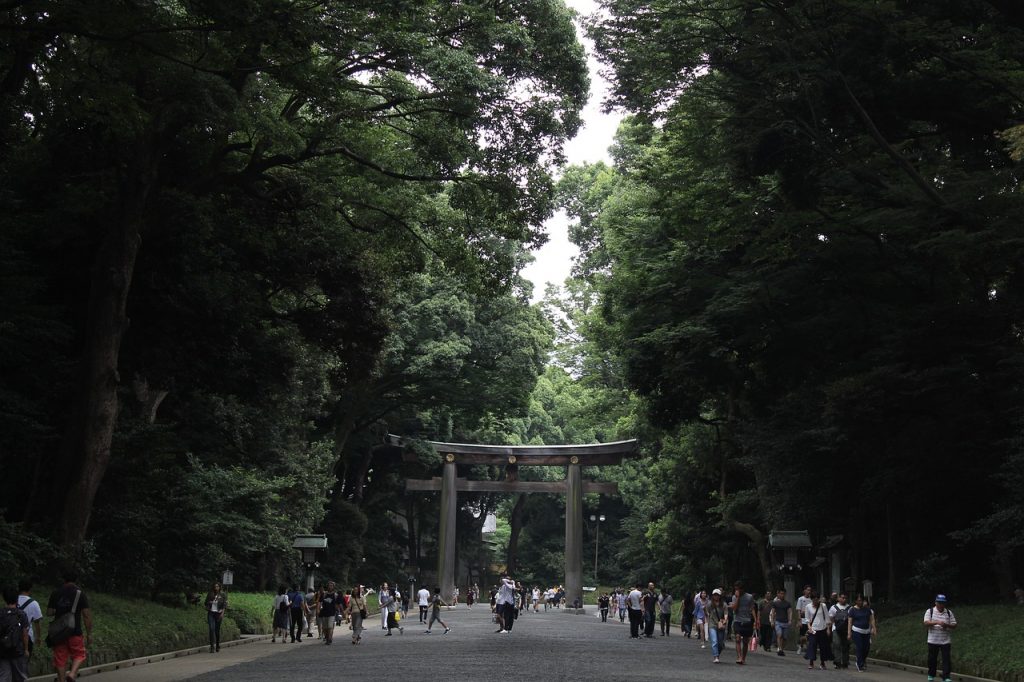
On the other side of the station lies a chaotic shopping scene, the main street of Takeshita-dori and its network of alleys the pinnacle of eccentric Tokyo fashion. Harajuku LaForet and Harajuku QUEST display everything from Lolita and Goth to street casual and preppy. Just down the street are sleek Tokyu Plaza and high-end Omotesando Hills, as well as boutiques that specialize in leather goods and accessories alongside thrift.
Shimokitazawa
Want to shop for unique clothing and miscellaneous things? Shimokitazawa is just a train ride away from Harajuku, ready to treat with vintage and thrift shops, boutiques and kitschy souvenirs. There’s a fair variety of cafés and eateries too, so you can take a break from shopping and enjoy afternoon tea. Stay in the evening for live music nooks and fairy lights.
Akihabara
To satisfy your otaku cravings, Akihabara is the end-all for anime and game aficionados. Animate may be the most recognizable name for fan goods, but there are plenty of other buildings lined with manga, anime, drama CDs, fan goods, posters, cosplay items and more. Akihabara is also the place to go for electronics and cheap bargains; Yodobashi Camera is your best bet for anything technology. If you’re curious enough, dip into a maid café for a truly mind-opening experience.
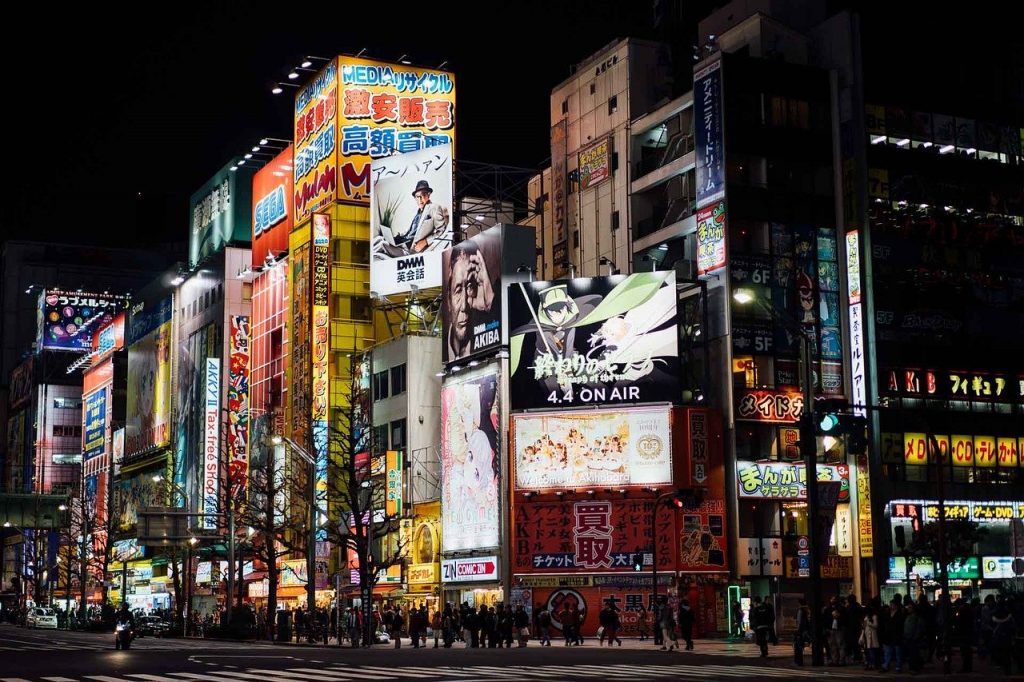
Ueno & Yanesen
Mix up the big city exploration with more suburban fixes – Ueno and Yanezen present a different side of Tokyo. Ueno Park takes you out into nature with the large Shinobazu Pond and adjacent Kyu-Iwasaki-tei Gardens, although its biggest draw is its myriad of museums: Tokyo National Museum, Tokyo Metropolitan Art Museum, National Museum of Nature and Science, The Ueno Royal Museum and an additional Ueno Zoo. The historical draw of Ueno extends to charming Yanesen, a neighborhood left untouched by war.
Easily accessible via Nippori JR, Yanesen is the overlapping of three residential hoods. Here you’ll find Yanaka-Ginza Shopping Street, cobblestone path and wooden shop fronts lingering from Edo period. The streets entwine around many shrines-turned-memorials, giving way to specialty museums and stunning Nezu Shrine.
Day 5 and Day 6: Venturing out
The middle of your trip will take you beyond the big cities to more rural but cultural towns. Take your pick of the following destinations:
Takayama
Mountainous Gifu prefecture gifts us with many uniquely designed towns and villages, but none so flavorful as Takayama. Explore the wooden house-lined streets of Sanmachi Suji district, this old town quarter set with craft shops and small eateries. Art galleries and cozy museums are among the traditional wares too. If you time it right, you can also witness the Takayama Festival that takes place in both spring and autumn, featuring ornate floats and colorful parades.
Kanazawa
Take a detour to historical Kanazawa for everything Edo period. Once the seat of a powerful feudal clan, the region has staunchly retained traditionally-styled districts and produce heritage arts. Kanazawa Castle and Kenrokuen Garden are classic itineraries that you should pencil in alongside the art museums and handicraft stores. Explore the secret rooms of Myoryu-ji Temple or pig out at the Omicho Fish Market.
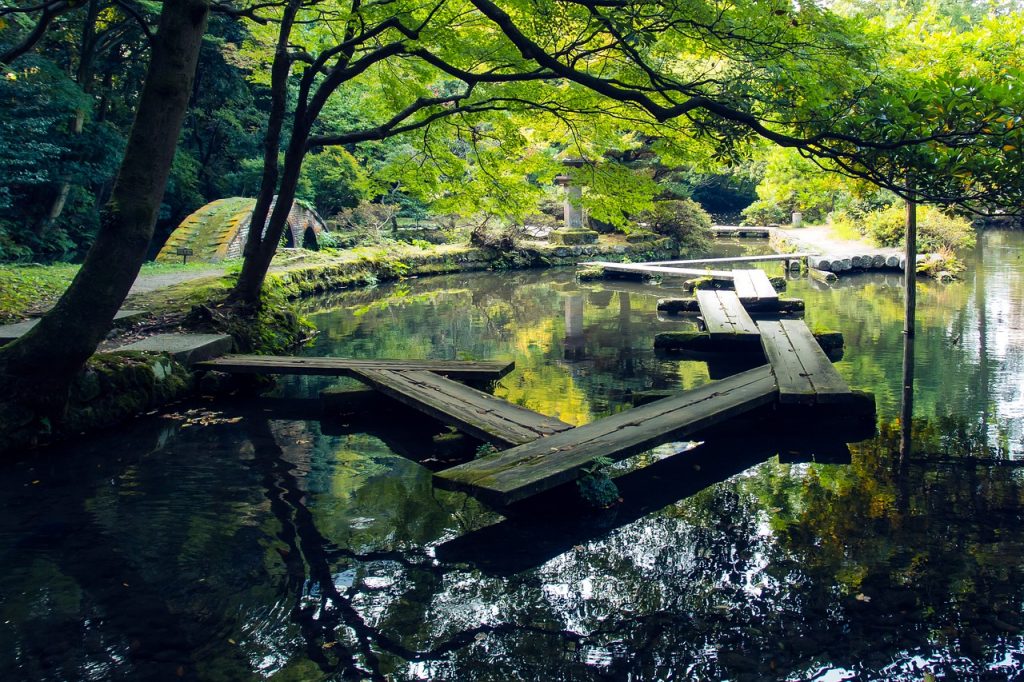
Shibu Onsen
Treat yourself to a stress-leeching soak in Japan’s hot springs – if possible, do so at the historic Shibu Onsen town of Yamanouchi. Perched on the genteel slope of Yokoyugawa River, this traditional collective of ryokan encourages the cultural practice of wearing yukata robes and the use of public bathhouses. You might find yourself sharing your bath with unexpected visitors, Japanese monkeys that have ventured down from nearby Jigokudani Monkey Park.
Mount Koya
Sitting south of Osaka is one of the most spiritual places in Japan: Mount Koya. A UNESCO World Heritage Site, it is the destination of a long pilgrimage bookmarked by Kongobu Temple. Other temples dot the mountain, accessible by day treks. Delve into the tree-embracing religious sphere, of its buildings of worship, memorial graves, stone-paved walkways, and moss-covered icons.
Hakone
Beyond Tokyo’s borders is the lush valley of Hakone, complete with traditional inns and hot springs. It is most beautiful in autumn when the oscillating mountains are strewn in reds and oranges, especially seen from the open terrace of the Hakone Open Air Museum. The only thing more stunning than the mountains is the Hakone Venetian Glass Museum, comprised of delicate glassware on display and for sale, as well as a strolling garden with strung up lights. Glittering Lake Ashi also overlooks Mt. Fuji; Hakone has some of the best views of this iconic landmark. If you’re up for a challenge why not hike the mighty peak? Here’s everything you need to know before climbing Mt. Fuji.
Nara
You probably have heard of the Nara deer, although its main attraction is the colossal Buddha statue within Todai-ji Temple. Founded in 738 CE, this heritage site is only part of what Nara Park has to offer. The Shinto Kasuga Taisha shrine is another historical site, featuring over 3000 lanterns. You can pick up neat souvenirs at nearby shopping streets, such as chopsticks, deer-printed goods, and traditional sweets.

Day 7: Arriving in Kyoto
Unless you’re driving, you’ll most likely be arriving via JR train. Chances are that you’ll arrive around or right before noon, so check-in and head out for lunch.
To maximize efficiency (and to drop off your bags earlier without detour), staying at downtown Kyoto is your best bet. Not only are you within walking distance of many shops and restaurants, you have easy access to the city’s rail and metro lines too. Depending on your distance to Kyoto JR station or Kawaramachi Station, you’re within walking distance of Southern Higashiyama where some major attractions are located.
Atmospheric Southern Higashiyama is another option as it offers many traditional inns and periodic lanes. Staying around Gion district or the river means you’re within walking distance of major temples, shrines and preserved districts, including the beautiful Nene-no-Michi Lane.
Definitely book out a traditional ryokan (Japanese inn) if possible! Kyoto is full of beautiful old buildings with remodeled interiors. Many are actually up for rent on Airbnb, offering a unique experience and snuggly sleep on futons and tatami mats.
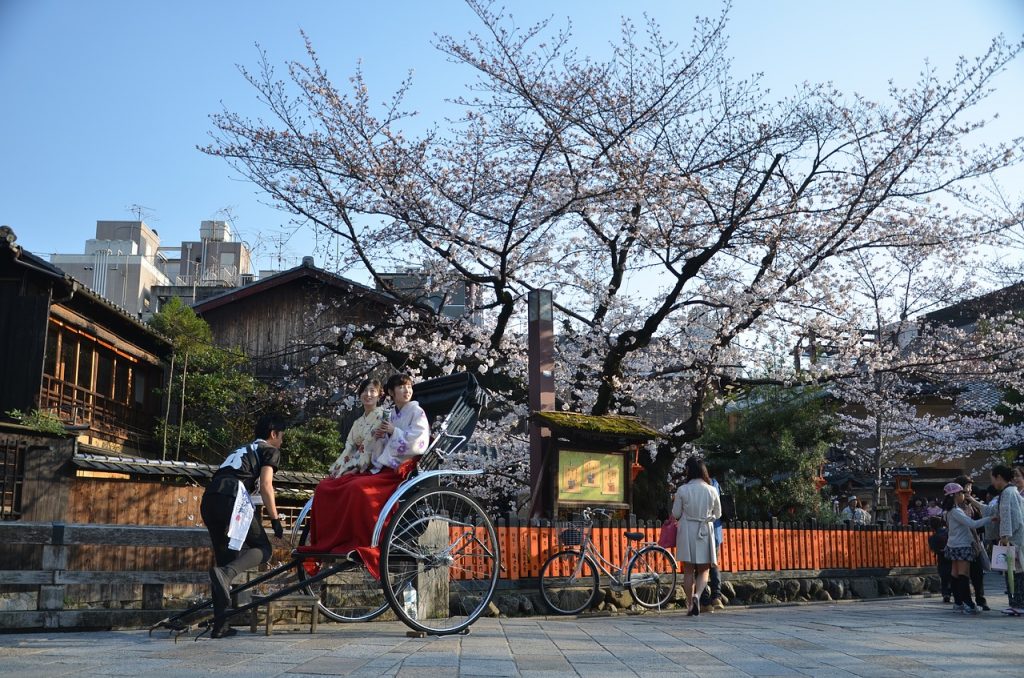
For your first day itinerary, we suggest exploring the area around your accommodation or ticking one to items off the attractions list below. Since most of the major temples are on the other side of the river from downtown Kyoto, it may be a good idea to get modern sightseeing done first. You can acquaint yourself with Kyoto’s slightly slower pace with a stroll down Kawaramachi Street and its spread of alleys.
Day 8: Exploring Kyoto
Kyoto is a patchwork of temples and shrines that date back centuries, with the requisite modern entertainments downtown. A day isn’t very long to explore everything so here’s a shortened list to help you narrow down your options.
Shijo-Kawaramachi intersection
The main streets of Shijo and Kawaramachi marks Kyoto’s city center. Takashimaya and Marui Department Store sit on the intersection with requisite oomph-factor; you should look to the traditional sweet shops and handicraft stores along Kawaramachi Street instead.
Nishiki Market
Foodies should definitely sample the goods at Nishiki Market where blocks of generational stalls are packed with specialized products. Taste test sushi, dried seafood, pickled bites and local sweets; there are also sit-down restaurants where you can pick from fresh catches and have them cooked to eat. You can also renew your kitchenware as this “Kyoto’s Kitchen” pitches in with knives and cookware on sale.
Gion & Pontoncho
Gion and Pontoncho are two prominent geisha districts where these traditional entertainers are still trained for private and public performances. Much of its lanes retain an olden feel, toting wooden structures with remodeled interiors. Pontocho, in particular, is known for its extended dining platforms within classy restaurants, wooden slats forming a terrace over the river. Try to visit Pontoncho Kaburenjo Theatre for its biannual geisha appearances.
Kiyomizu-dera Temple
A highly revered temple dated back to 778 AD, Kiyomizu-dera is where those who pray for love go. Considered one of Japan’s National Treasures, its hillside perch yields stunning views over the city. Remember to make your offerings at Jishu Shrine and buy home some souvenirs from the winding Sanneizaka Shopping Street that leads back to the main street. You can also dress up in kimonos and take pictures on the grounds.
Shugakuin Imperial Villa
Make a detour to the farmlands and gardens that make up Shugakuin Imperial Villa. Meandering stone paths take you through a strolling garden while the tour guide recounts the history of this imperial property. It’s also in close vicinity to Manshuin Temple, Enkoji Temple, and Ginkaku-ji.
Ginkaku-ji & Kinkaku-ji
Often viewed as sibling attractions due to their “gold” and “silver” monikers, Ginkaku-ji and Kinkaku-ji are two Kyoto classics. Admire the zen gardens that imitate nature using sand and rock formations and the respective gold and silver pavilions that give them their name.
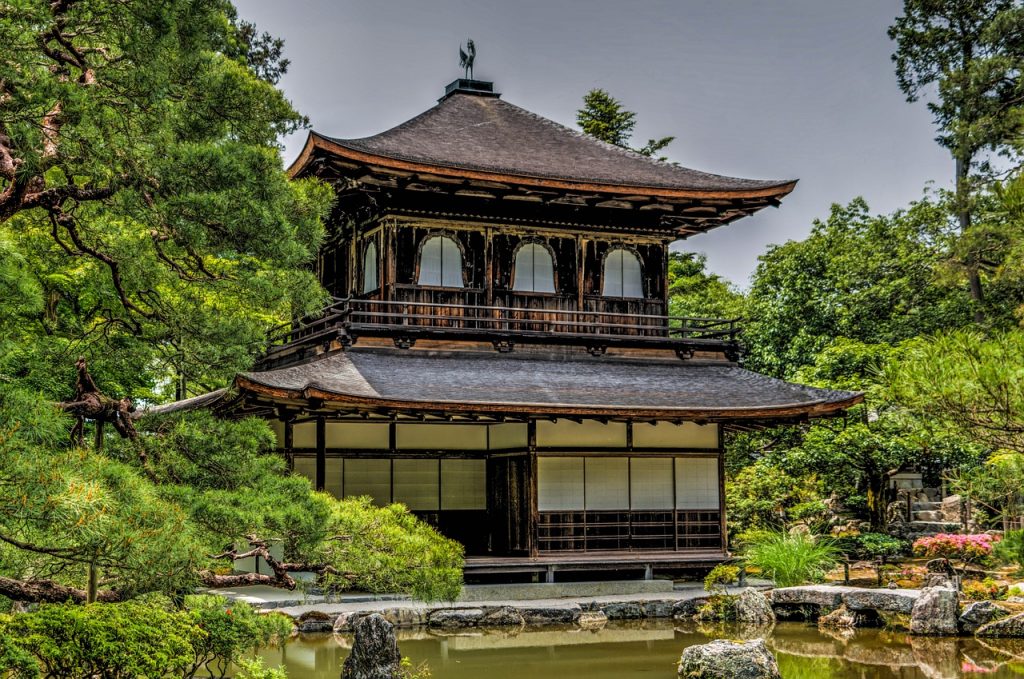
Fushimi Inari-Taisha
Perhaps the perfect embodiment of Kyoto’s charms, the Fushimi Inari shrine is a world-famous landmark. The sharp burn of its vermillion torii gates builds a path through the forested estate to lead to modest shrines and stunning viewpoints. Hiking to the summit takes 2 to 3 hours but you can turn back at the Yotsutsuji intersection after snapping shots of the breathtaking view. While some consider it an overdone tourist attraction, the shrine’s history and autumn foliage prove its worth. Make it a point to try kitsune udon where the shrine’s fox motif has influenced on-site dishes.
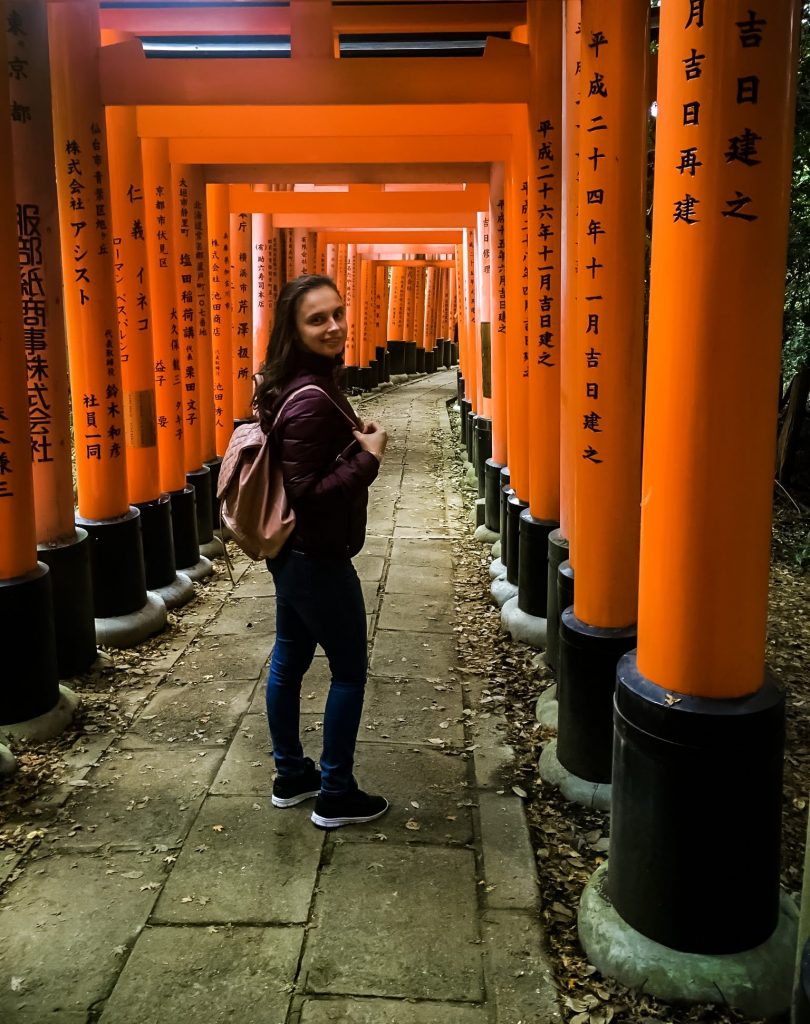
Kyoto Imperial Palace
Before Tokyo was Kyoto as the imperial stronghold over six centuries. History and culture are firmly entrenched within the Kyoto Imperial Palace estate, which includes the Sento and Omiya Imperial Palace built for former emperors. You’ll find ceremonial halls (that are still used occasionally) as well as former royal residences and intimate gardens. If possible, picnic on the expansive grounds to better bask in the serene ambiance.
Murin-an Villa
This Taisho period villa is now open to the public as an open-air museum and teahouse. The western-style building is in juxtaposition to the traditional strolling garden, where the rush of a waterfall makes the perfect soundtrack for a quick tea ceremony.
Arashiyama
If time permits, visit Arashiyama which sits along Kyoto’s borders. Mount Arashiyama encircles the cultural riches of Togetsu-kyo Bridge, Tenryuji Temple and the many temples that layer the neighborhood. Wander through the lush Bamboo Grove to reach Okochi-Sanso Villa, where visitors can enjoy a cup of green tea while taking in valley views.

Day 9: Quick Stop Osaka
Osaka is a happy medium of Tokyo and Kyoto, combining heritage sites with city delights. Some highlights to not miss out:
Dotonbori & Shinsaibashi
Osaka is food central of Japan and Dotonbori is the miniature; if there’s one place to see, this is it. Several streets come together in a mish-mash of vendor stalls, street-side takoyaki, standing ramen and all-you-can-eat sukiyaki signs spelled out in neon when dusk falls. It is also conveniently adjacent to Shinsaibashi Shopping Street, a kilometers-long covered arcade of fashion boutiques and sweet shops. It’s an all-in-one stop of bargain buys and yummy eats.
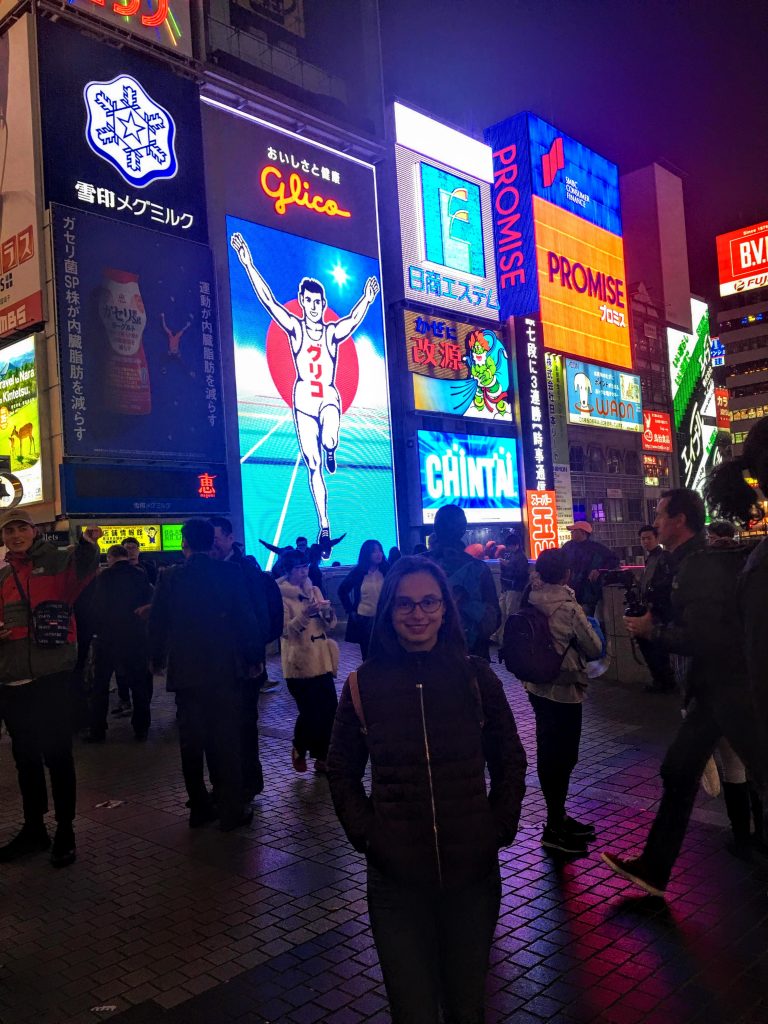
Osaka Castle
While the original Osaka Castle (which took 100,000 workers to build) was destroyed some century ago, the rebuilt replica is still a post-card symbol. It is known for its tiered structure and teal accents on white, a sharp contrast to the deep moat around it. Tour inside to find preserved artefacts and artwork, and an 8th-floor observation point.

Temples and shrines
Pray for luck at Katsuoji Temple and pick up a daruma doll to keep the streak going. For a more ancient shrine, visit Sumiyoshi Taisha to admire its sharp architectural angles, forked finials, and bright vermillion fencing. Unique Namba Yasaka Shrine is also sure to catch your attention – aptly coined “Lion Shrine” for its giant lion-head statue.
Universal Studios Japan
One can argue that Universal Studios Japan is better than Tokyo’s Disneyland since it caters to a wider demographic. Spend the day zooming through space or posing with temporary themed-exhibits. Don’t miss out on the magical Harry Potter World either, complete with a replica of Hogsmeade and a swooping ride through Hogwarts.
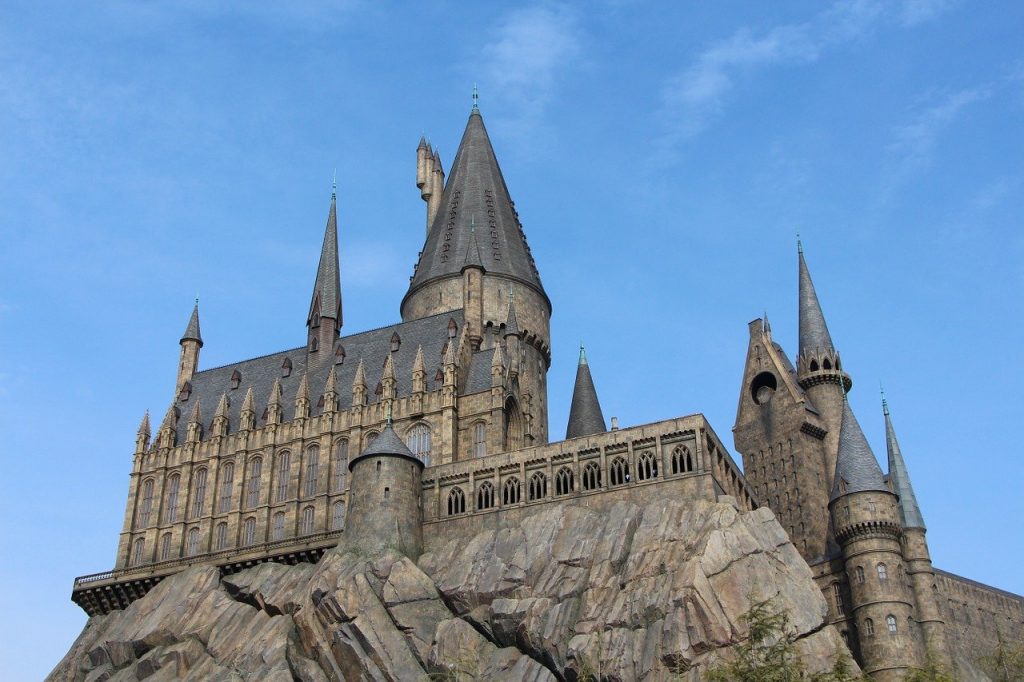
Shopping
Shinsaibashi wows with eclectic fashion trends and bargain boutiques, but Umeda is where the shopping malls are: HANKYU Umeda Department Store, Isetan, Yodobashi Camera, Daimaru Umeda, HEP Five and more. Western trends intertwine with Japanese elements at America-mura, a trendy area with boutique cafés and colorful murals. There is also Nipponbashi Denden Town for an electronics hunt, featured alongside home appliances and household items on the cheap.
There are plenty of things to do in Osaka so do your research! Other notable experiences include the Ramen Museum in which you can make your own instant noodles (package design too), Tennoji Zoo, checking out the views at Umeda Sky Building and exploring the eccentric Namba area.
Day 10: Departure from Kansai Airport
You’ve finished your trip! And what an amazing introduction to Japan it was. Depart from Osaka’s Kansai International Airport, which is easily reachable via airport bus, monorail, and rapid trains. Spare some extra time for last-minute shopping at the duty-free shops.
Before you commit to this itinerary, remember that you can always switch around the locations! For instance, you might want to make Hakone a day trip from Tokyo instead of a two-day visit. You can also headquarter in Osaka for the second half of the trip, planning Kyoto as a day trip instead of an overnight stay. Since Kyoto is just 45 minutes away from Osaka by Hankyu Line (express train), you can save yourself the hassle of moving accommodations another time. Much of what you decide is dependent on personal preference.
